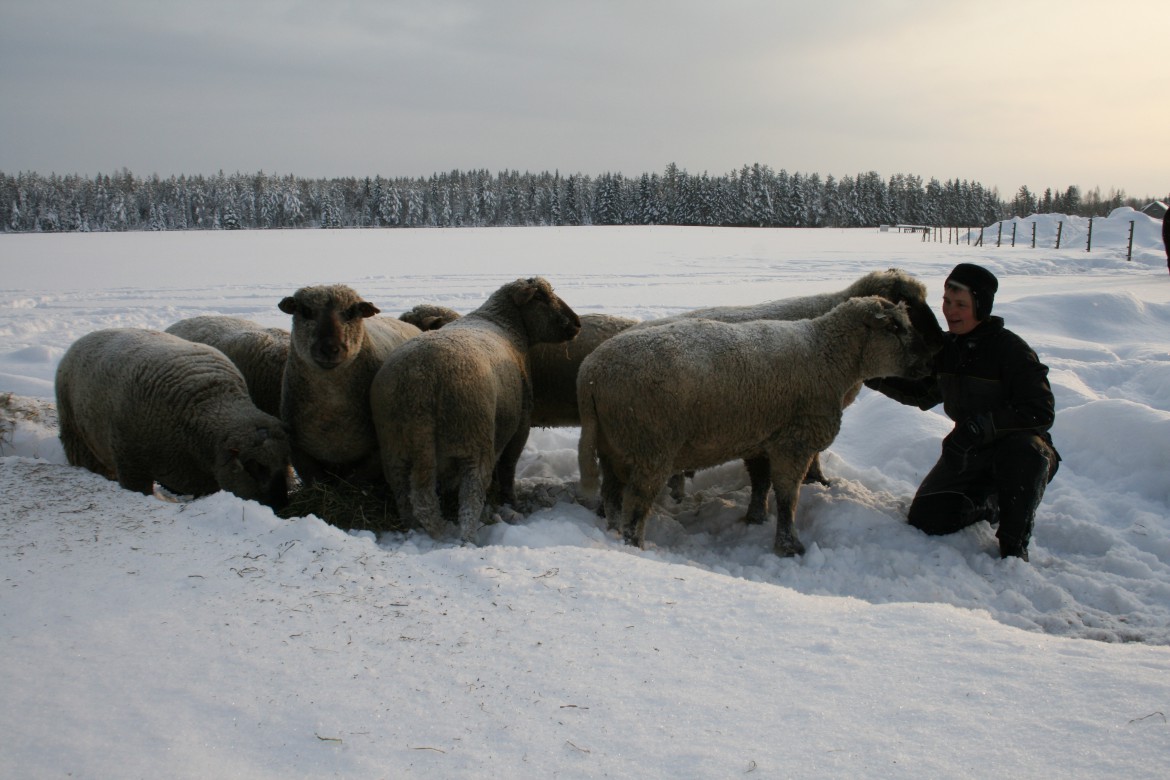Kirjoittaja: Roosa Honkanen / Lammastilan arkea
The landscape outside is finally starting to look like a proper winter wonderland! A blanket of snow covers the ground, the trees glimmer with ice and snow, and the amount of daylight has started to clearly increase. Unfortunately, the cold weather that we have been having for the last couple of weeks has been a […]
The landscape outside is finally starting to look like a proper winter wonderland! A blanket of snow covers the ground, the trees glimmer with ice and snow, and the amount of daylight has started to clearly increase. Unfortunately, the cold weather that we have been having for the last couple of weeks has been a source of trouble at the farm. Although my own skin got somewhat used to the cold after the first couple of days, sadly the same cannot be said about the machinery at the farm. When the temperatures get this low, water freezes and the machines scream in agony in the same way every day.
While we have a completely functional automatic watering system in the sheep barn, even it starts to give way every now and then when the temperature is well below -30 degrees Celsius. Even though a large part of our sheep barn is unheated, the sheep’s drinking water does not freeze even at very low temperatures, thanks to the constant flow of water and the small heating elements at the bottom of the water bowls. Despite that, keeping the water bowls ice-free has been a daily chore at the farm. To help us with this task, we keep a water cooker in the control room. We use it to melt the ice that has formed on the surface of the water bowls. If the ice has reached the inner mechanisms of the waterer, we have to open the water bowl and use a heat gun to thaw the ice in the piping. It just so happened that last week, because of a series of unfortunate events, the switch that regulates the flow of water had turned off. When morning came, we were surprised to see that all fof the water bowls in the lambing facility were empty… And the problem, of course, is the fact that when the water does not flow in the pipes, it freezes. More than 10 meters of piping in the structures of the barn had frozen overnight, so we were in for a lot of work. We managed to thaw the ice with some DIY spirit, though: we attached a 20-meter pressure hose to a compression sprayer and used it to direct a steady flow of hot water into the piping. Admittedly, it wasn’t the quickest thing in the world to do. I had to skip my evening exercise that day…
On the other hand, feeding at our farm is hardly affected by the freezing cold weather. We harvested and stored the fodder when it was dry, and our fodder mixing wagon runs smoothly. Thanks to the dried hay we use in the feed mixture, the mixture itself is also so dry that it takes a while for it to freeze once it is put on the feeders. Of course, when the weather is this cold, it is smart to fill the feeders in smaller portions than usual. We have also put a lot of extra bedding in the pens so that the sheep have plenty of straw to keep them warm during these cold days. In the unheated side of the barn most of the ewes are still in long wool, while the ewes that were sheared later in the fall have heaters for extra warmth. Despite the freezing temperatures, the sheep seem to be content, so I think that after the first couple of days even they start to get used to the cold. 🙂
I read in the newspaper over a cup of tea that Tohmajärvi has been on average the coldest area in Finland in January… What can you do. Time to roll down the sleeves and get to work!

